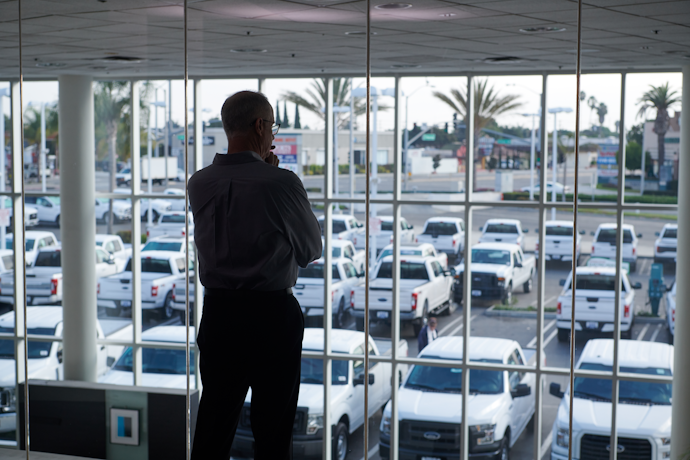5 ways to focus on safety with GPS fleet tracking
For businesses that rely on vehicles and drivers to keep things running, safety is everything. Learn how GPS tracking...
Read more
Many nonprofits which employ field workers to provide community and business services, no matter their focus, must consistently push to do more with limited funds, whether grantmaking foundations, advocacy groups, civic clubs, social organizations or other nonprofits.
These nonprofits often have dedicated vehicles or small fleets as an integral part of advancing their mission. And like other areas of the organization, these vehicles must run as productively, safely and cost-effectively as possible to account for tight budgets and, often, limited staff or volunteers.
Addressing key nonprofit challenges requires investment in technology solutions, like telematics, that can help nonprofits deliver maximum ROI. Here’s an overview of four critical challenges fleet-based nonprofits face, and how telematics technology helps to overcome them.
Nonprofits have a lot on their plates, and resources are limited. That makes keeping track of driver destinations and vehicle locations more difficult, especially if done manually.
The ability to effectively monitor driver activity, including routes taken and stops made, is key to streamlining fleet efficiency. Telematics technology enables nonprofits to improve customer service and better address business decisions by providing near real-time data, alerts and reports around vehicle location and activity tracking.
In fact, 50% of fleets across industries reported reaching their customer service goals after implementing GPS tracking.1 Whether reviewing current data or analyzing historical data, nonprofits can gain fleet visibility by leveraging these useful tools:
For a nonprofit, reputation is everything and safety is a top priority. Harsh driving behaviors can put both drivers and the public at risk. Additionally, since those vehicles are tied to the organization, aggressive or unsafe driving can have a negative effect on a nonprofit’s image and impact its ability to carry out its mission. Nonprofits need a better way to manage and coach driver behavior and help facilitate safe driving protocols.
Telematics technology monitors driver behavior, giving nonprofits a window into whether harsh driving events like speeding, harsh braking and hard cornering are taking place. Nonprofit managers can run reports, receive alerts and review video to review driving trends or a specific driving event. AI Dashcams can even help automatically alert drivers if an unsafe driving incident occurs. Managers can use this system data to improve driver habits through coaching and discussion. Alerts and reports can include:
AI Dashcam can help detect risky behavior, like tailgating, when someone is in the vehicle’s path, and when a driver loses focus on the road, uses a phone, falls asleep or is smoking. When the camera AI detects risky behavior, an audible in-cab alert immediately tells the driver what they did, and video footage of the event is uploaded to the fleet platform.
For most if not all nonprofit organizations, budgets are tight. That’s why managing operating expenses, including those related to fleet vehicles, is critical. This requires detailed oversight into vehicle maintenance, fuel usage, labor costs and more. Plus, many nonprofits lack the time and workforce to track this information manually. This is where telematics technology comes in.
A telematics system can help nonprofits keep track of the data related to operating fleet vehicles economically and efficiently, including excessive idling, inefficient routing, routine maintenance and safety inspections. To gain a better handle on vehicle cost management, nonprofits can take advantage of:
For nonprofits that provide services, such as donation pick-ups or drop-offs, it’s important to provide proof of services rendered as part of prioritizing customer satisfaction. However, paper-based records or verbal accounts can be unreliable and difficult to track.
Telematics technology enables the near-real time capture of customer signatures, photos and other information via digital forms with time stamps. This digital verification gets stored securely in the cloud for quick, easy retrieval by the back office for improved visibility into whether a job has been completed and when.
Nonprofits face an array of operating challenges, but managing fleet vehicles doesn’t have to be one of them. Find out more about how GPS technology can streamline nonprofit fleet management.
Tags: Community, Government, Public works




Find out how our platform gives you the visibility you need to get more done.
For businesses that rely on vehicles and drivers to keep things running, safety is everything. Learn how GPS tracking...
Read moreAre you ready for vehicle tracking? Go through our checklist to learn the signs you’re ready to add fleet tracking to...
Read moreLearn what's important when evaluating your options for fleet management solutions.
Read more7 Secrets to a Safe Fleet
Read more